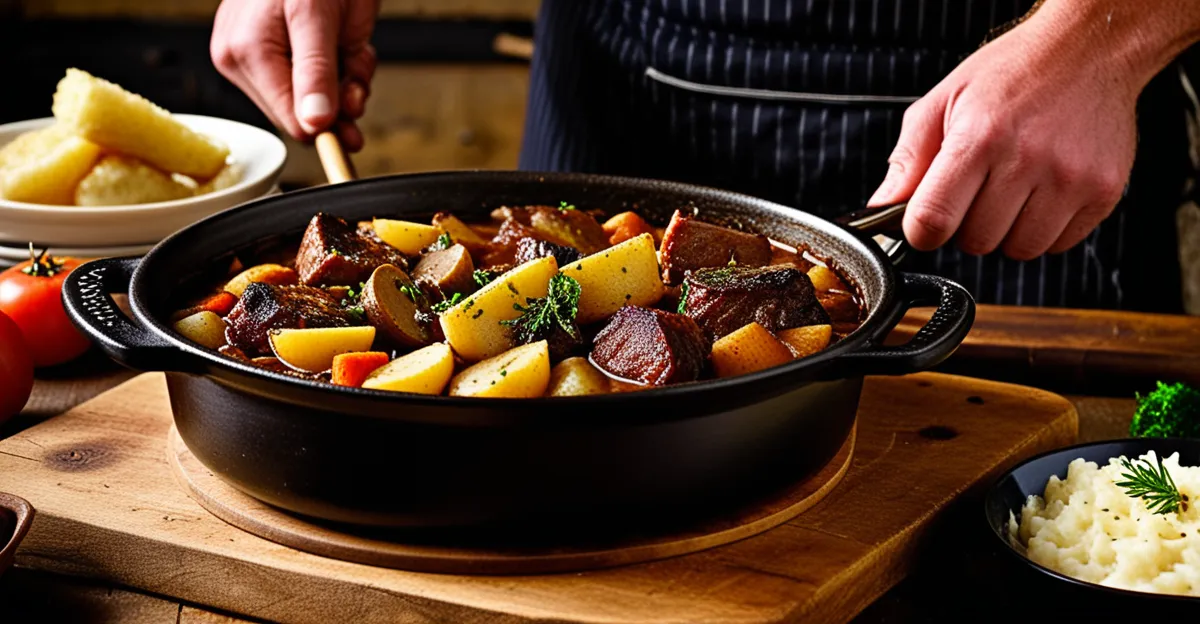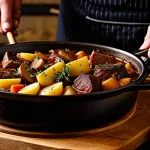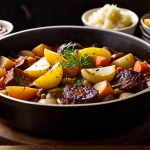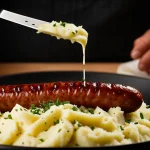Essential Ingredients for a Traditional Lancashire Hotpot
Traditional Lancashire hotpot ingredients focus on simplicity and quality, ensuring an authentic stew recipe that respects Lancashire cooking basics. The cornerstone of the dish is lamb, ideally from a local source, as it offers the rich flavour essential to this iconic British stew. Choose cuts such as neck or shoulder, which become tender through slow cooking.
Vegetables play an equally vital role. Onions and carrots form the base aromatics, while potatoes are indispensable—not only as a topping but also incorporated into the stew. It’s important to use starchy, waxy potatoes which hold their shape during cooking, preserving the dish’s texture.
Also to read : How can you create a classic Lancashire hotpot?
Another critical component is the use of traditional suet or an all-butter topping, rather than modern substitutes. This maintains authenticity and ensures the distinctive crust that defines a Lancashire hotpot. Avoid shortcut ingredients like ready-made sauces or pre-packaged pies that can dilute the genuine taste.
In summary, attention to traditional Lancashire hotpot ingredients such as quality lamb, root vegetables, and suet topping preserves the heritage and depth of flavour this dish is celebrated for.
Topic to read : How can you create a gourmet version of bangers and mash?
Step-by-Step Preparation Method
The Lancashire hotpot preparation begins by carefully cutting the quality lamb into even pieces to ensure uniform cooking. Onions and carrots are peeled and chopped into thick slices, maintaining texture throughout the slow-cooking process. Potatoes, the hallmark topping, should be sliced evenly—thin enough to cook through yet sturdy enough to form a golden crust.
Layering ingredients is crucial in step-by-step cooking. The process starts with a base layer of lamb and vegetables seasoned simply with salt and pepper, avoiding overpowering spices common in less authentic stew recipes. Each layer is gently pressed down to create a compact casserole, enhancing the melding of flavours during the oven time.
For the topping, preparing a traditional suet crust or arranging sliced potatoes in overlapping rows seals in moisture. This traditional suet or potato topping is key to developing the signature golden brown crust, a distinctive feature of Lancashire cooking basics. Covering the dish tightly before baking ensures the stew remains succulent.
Following this precise method reflects the integrity of authentic British recipes and distinguishes the traditional hotpot from simplified versions.











